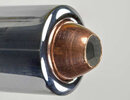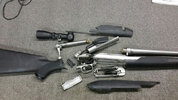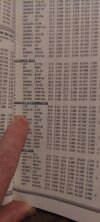RetiredUSNChief
Member
If we define efficiency as the relationship of the potential energy of the powder to the resulting kinetic energy of the bullet, I want to know why the X-Terminator load is so much less efficient than expected.
This is laudable.
However, the reality is that all you can possibly get here is suppositions and postulations. You will not get a definitive answer.
The people who might be able to provide that answer are the makers of the powder, and they're not likely to go beyond a simple layman's phrasing that amounts to something akin to "it's intended to give the performance stated under the specified load conditions". And they're not going to change the powder for two reasons: the existing powder does what it's designed to and changing the powder actually results in a new and different powder with its own characteristics.
I look at your question in the same manner I look at ammunition in general. Whenever I buy a new gun, I run a variety of ammo through it to see how it operates with different types and brands.
If it eats everything I feed it, great. If it likes some ammunition and not others, I simply don't feed it the ammunition it doesn't like. I can't change the design/manufacture of that ammunition, so what would be the point? It would just be an exercise in frustration.
So the best we can do here really amounts to "guess".





